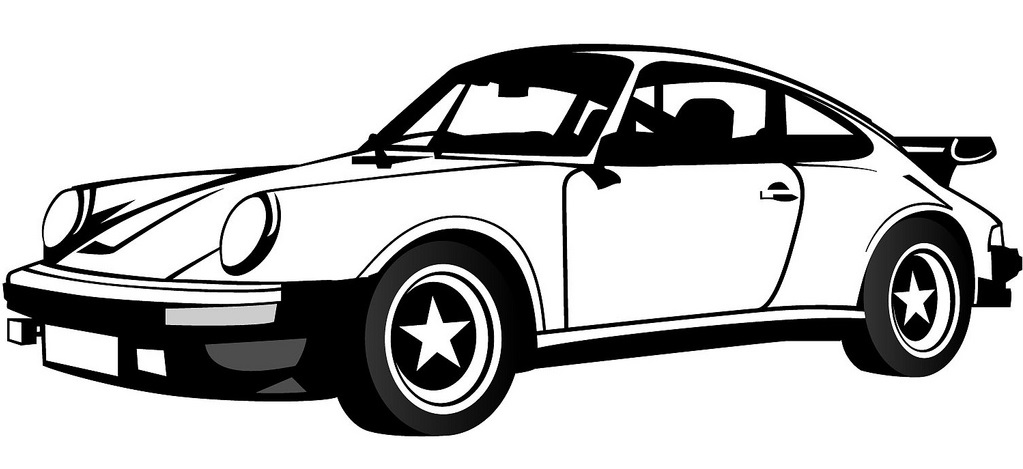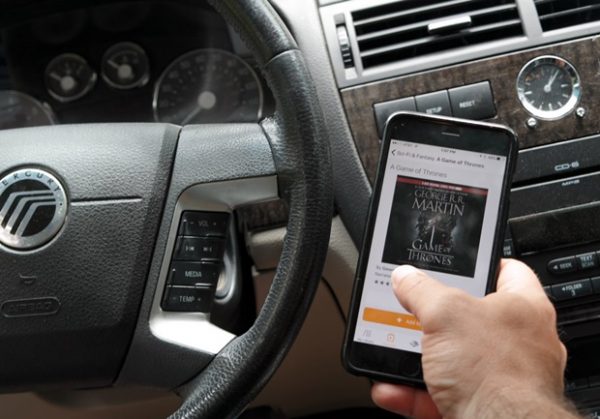A brief history of
Dacia
Introduction
The car manufacturer Dacia has made an important impact on the automotive world. In this article we will give a brief but detailed history of the Dacia marque.
We will look at the origins of Dacia looking at who, why, where and when Dacia was founded. We'll look at the design of the iconic Dacia logo and what are some the more significant Dacia models.
We'll take a glance at what racing history the Dacia has and who some of the most important people have been in the history of Dacia over the years.
Who, where, when and why was
Dacia founded?
Dacia, a renowned car manufacturer, was founded in 1966 in Colibasi, Romania. The company's origins can be traced back to the initiative of the Romanian government, which aimed to establish a domestic automobile industry. The primary motivation behind Dacia's establishment was to provide affordable and reliable transportation options for the Romanian population.
At the time of its founding, Dacia's manufacturing plant was equipped with state-of-the-art facilities, allowing the company to produce its own vehicles. The brand's early models were based on licensed designs from Renault, a French automaker. The collaboration with Renault played a crucial role in Dacia's development, as it provided access to technology, expertise, and production know-how.
The decision to establish Dacia was driven by the government's commitment to developing a national automotive industry that would contribute to the country's economic growth and self-sufficiency. By manufacturing vehicles domestically, Romania aimed to reduce dependence on imports and create job opportunities within the automotive sector.
Additionally, Dacia aimed to address the demand for affordable and practical cars in the Romanian market. The brand's focus on producing economical and reliable vehicles resonated with consumers, and Dacia quickly gained popularity in its home country. The company's commitment to affordability, quality, and accessibility has been a defining characteristic throughout its history.
Over the years, Dacia has expanded its reach beyond Romania and has become an internationally recognized brand. It has gained a reputation for offering value-for-money vehicles that combine practicality, durability, and cost-effectiveness. Dacia's success can be attributed to its ability to meet the needs of customers who prioritize affordability and functionality without compromising on quality.
How did the
Dacia logo originate?

How did the Dacia logo originate?
The history of the Dacia logo reflects the evolution of the brand and its identity over the years. The original Dacia logo, introduced in 1968, featured a simple design consisting of the company name written in bold capital letters. The logo represented the brand's straightforward approach to manufacturing practical and affordable vehicles.
As Dacia grew and gained recognition in the automotive industry, the logo underwent several modifications to reflect the brand's evolving image. In 1992, the logo was updated with a more modern and stylized font, giving it a contemporary look. The design retained the brand name but presented it in a more dynamic and visually appealing manner.
In 2008, Dacia introduced a significant change to its logo with the launch of the Dacia Sandero model. The new logo featured a combination of the brand name and a simplified emblem in the shape of a rhombus. This logo design aimed to create a more distinctive and recognizable visual identity for the brand.
Since then, the Dacia logo has remained relatively consistent, with minor refinements to enhance its clarity and legibility. The current logo features the brand name in bold capital letters placed within a rectangular shape, symbolizing stability and strength. The logo's color scheme typically includes shades of blue and silver, representing trust, reliability, and innovation.
Overall, the evolution of the Dacia logo reflects the brand's growth, modernization, and commitment to maintaining a strong and recognizable identity. The changes in the logo design over the years align with the brand's progression from a domestic manufacturer to an international player in the automotive market.
What are some of the significant
Dacia models?
Dacia, the Romanian car manufacturer, has a rich history of producing reliable and affordable vehicles. While the brand is well-known for its practical and budget-friendly models, it has also ventured into the realm of higher performance cars, catering to enthusiasts seeking a more exhilarating driving experience.
One of Dacia's notable performance models is the Dacia 1300/1310. Introduced in the late 1960s, this compact sedan quickly gained popularity and became a symbol of Romanian automotive industry. While not a dedicated high-performance vehicle, the Dacia 1300/1310 offered a decent power-to-weight ratio and provided an engaging driving experience.
In the 1990s, Dacia introduced the Dacia Supernova, a compact hatchback that offered improved performance and handling compared to its predecessors. The Supernova featured sportier styling cues and came equipped with more powerful engine options, making it a more spirited choice for driving enthusiasts.
Another significant model in Dacia's performance lineup is the Dacia Logan S. Launched in the mid-2000s, the Logan S was a sporty version of the popular Logan sedan. It featured a more aggressive exterior design, sport-tuned suspension, and upgraded brakes, enhancing both the visual appeal and the driving dynamics of the car.
In recent years, Dacia has expanded its performance offerings with the introduction of the Dacia Sandero RS. The Sandero RS is a hot hatch version of the popular Sandero model, featuring a more powerful engine, sport-tuned suspension, and upgraded brakes. It offers a thrilling driving experience without compromising on affordability.
While Dacia's primary focus has been on producing practical and affordable vehicles, the brand's foray into higher performance models demonstrates its ability to cater to a wider range of customers. These performance-oriented models showcase Dacia's commitment to delivering not only reliable transportation but also an enjoyable driving experience.
As Dacia continues to evolve, there is potential for the brand to further explore the realm of performance vehicles, offering enthusiasts more options for spirited driving. With its emphasis on affordability and practicality, Dacia has the opportunity to carve a niche in the market by providing accessible performance cars that appeal to a broad range of drivers.

One of Dacia's Most Iconic Models
Who are some of the most important people in
Dacia's History
Behind the success of Dacia, there have been several key individuals who have played significant roles in the brand's development and growth. These individuals, with their expertise and dedication, have helped shape Dacia into the reputable car manufacturer it is today.
One notable figure is Nicolas Olvier, a French engineer who served as the Chief Executive Officer of Dacia from 1999 to 2005. Olivier played a crucial role in transforming Dacia into a profitable and globally recognized brand. Under his leadership, Dacia implemented a successful business strategy that focused on producing affordable and reliable vehicles for the mass market. Olivier's vision and strategic decisions were instrumental in turning Dacia into a success story and setting the stage for its expansion into international markets.
Another important person in Dacia's history is Gérard Detourbet. Detourbet, a French engineer, is widely regarded as the mastermind behind the brand's low-cost car concept. He led the team responsible for developing the Dacia Logan, a breakthrough model that revolutionized the automotive industry with its affordability and reliability. Detourbet's innovative approach to car manufacturing and his commitment to delivering value to customers played a crucial role in establishing Dacia as a leading player in the entry-level segment.
Furthermore, the contributions of Dacia's design team cannot be overlooked. Talented designers such as Laurens van den Acker, responsible for the design of the Duster, and David Durand, who led the design of the Sandero, have played key roles in creating the distinctive and modern aesthetic of Dacia's models. Their ability to blend functionality, style, and affordability has been instrumental in shaping Dacia's product lineup and attracting a wide range of customers.
Additionally, the dedicated engineers and technicians who work behind the scenes deserve recognition for their contributions to Dacia's success. Their expertise in vehicle development, manufacturing, and quality control ensures that Dacia vehicles meet the brand's high standards of reliability and affordability. Their commitment to delivering exceptional value to customers has been a driving force behind Dacia's positive reputation in the automotive industry.
These individuals, along with many others, have played vital roles in the success of Dacia. Their combined efforts and expertise have enabled the brand to establish itself as a trusted name in the automotive industry, known for producing practical, reliable, and affordable vehicles that cater to a wide range of customers.

One of the most influential people in the history of Dacia
Dacia's Racing History
Racing has played a limited role in Dacia's history compared to some other car manufacturers. However, the brand has made notable appearances in various racing events, showcasing its vehicles' performance capabilities and durability.
In 2010, Dacia made its official entry into the world of motorsport by participating in the Dakar Rally, one of the most challenging off-road races in the world. Dacia entered the competition with its Duster model, specifically modified and adapted for the demanding terrains and harsh conditions of the rally. The Dacia Duster demonstrated its strength and reliability by successfully completing the grueling race, earning respect and recognition for the brand.
Furthermore, Dacia has been involved in the Andros Trophy, a popular ice racing championship in France. The brand has competed in the electric category of the championship, highlighting its commitment to sustainable mobility and showcasing the performance capabilities of its electric vehicles. Dacia's participation in the Andros Trophy reflects its dedication to pushing the boundaries of performance and exploring new technologies.
Although Dacia's racing activities have been relatively limited, the brand's involvement in events like the Dakar Rally and the Andros Trophy demonstrates its passion for motorsport and its desire to test its vehicles in demanding and competitive environments. These endeavors also serve as opportunities for Dacia to gather valuable data and feedback, which can be utilized in the development and improvement of its production vehicles.
While racing may not be at the forefront of Dacia's identity, the brand's occasional participation in motorsport events showcases its commitment to performance, endurance, and pushing the boundaries of what its vehicles can achieve. These racing experiences contribute to the continuous development and improvement of Dacia's models, ensuring that customers can enjoy reliable and capable vehicles both on and off the racetrack.
Summary
Dacia is a car manufacturer known for its practical and affordable vehicles. The brand has gained popularity for providing reliable transportation solutions at an accessible price point. With a focus on simplicity and functionality, Dacia has carved its niche in the automotive industry.
Dacia vehicles are designed to meet the needs of everyday drivers, offering practicality, efficiency, and durability. The brand's lineup consists of various models, including compact cars, SUVs, and commercial vehicles. Dacia vehicles are known for their robust build quality, spacious interiors, and value for money.
View Dacia Car Specifications
More Manufacturer Histories.

























